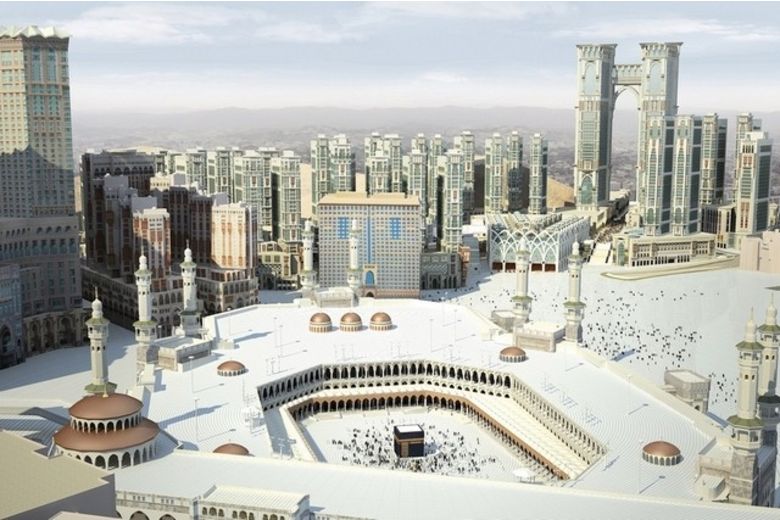
Trains of explorers from around the globe can take a wide range of courses to city Makkah however all ways lead to a solitary goal. Throughout the hundreds of years, the old journey courses have acquired incredible changes and advantages exchange, learning and social trade, with the adventure going about as an extension of harmony and correspondence between Islamic grounds. The courses were utilized by Hajj pilgrims as well as during the time by explorers trying to achieve distinctive goals. The most well-known of the Hajj courses are the Egyptian, Iraqi, and Yemeni, Syrian, and Omani ways.
Muslim caliphs and sultans committed uncommon regard for Hajj courses. The Hajj emir, for instance, was in charge of managing pilgrimage Hajj, building up stops on the ways, and deciding the separations between these stops.
Authentic sources have recorded seven fundamental courses to Makkah and Madinah. The Kufa to Makkah was the most critical way for both trade and Hajj. This course was otherwise called Darb Zubedah (the way of Zubedah) and was named after Caliph Harun Al-Rashid’s significant other, who built up the course. Its utilization started after the success of Iraq and the spread of religion Islam over the Levant, and it thrived amid the time of the Rashidun caliphate. In the Abbasid period, this course turned into a critical connection between Baghdad, the Two Holy Mosques and whatever remains of the Arabian Peninsula.
The course was very much arranged and built, with stops and rest zones. Utilities, for example, wells, dams and lakes, helped make the sacred voyage simpler for travelers. After the period of the incredible caliphs finished, the street was focused by dissident towns and clans. A portion of the street’s stops, for example, Rabazah station, were obliterated and harmed and, accordingly, the guide was lost and explorers stopped to utilize it except if they were all around secured.
After the Mongols vanquished Baghdad in the mid thirteenth century, the street was upset and the greater part of its stations pulverized. Studies demonstrated that the compositional structures on the Kufa to Makkah course speak to an exceptional Islamic building style, with fastidious plan and amazing ideas. Royal residences and bars out and about were worked with thick dividers, and offered magnificent administrations and offices. The lakes were worked in rectangular, and roundabout shapes, square, mirroring Muslims’ ability in building water offices.
The Basra to Makkah course, the second most critical pilgrimage Hajj pathway, went through Wadi Al-Batin in the upper east of the Arabian Peninsula, crossed few deserts, and ran parallel to the Kufa to Makkah street until the point that the two ways met at Umm Kharman station in Awtas, 18 km from Zat Irq. The course is around 1,200 km long and has 27 principle stops, four of which are presently inside Kuwait and Iraq, while the rest are inside Saudi Arabia.
The third course, the Egyptian Hajj way, was utilized by pilgrims coming from Egypt, Andalusia, Morocco, and zones of Africa. They originally went to the Sinai Peninsula to achieve Aqaba, the primary stop on the course, before starting trip on to Midian. Subsequent to coming to Midian, Egyptian pilgrims swung to one of two ways, one inland street and the other waterfront.
All through the Ottoman and Mamluk times, convoys of pilgrims from Egypt would assemble in Barakat Hajj, close Cairo, and at that point travel through the Suez way, going through Ajrud and Buwaib until the point when they crossed the Sinai Peninsula to the Gulf of Aqaba. They would then drop the Negev of Aqaba to reach Aqabat Ayla.
Travelers’ parades would leave Aqabat Ayla and to Badr. From Badr, the troop would venture out to Rabigh, at that point Asfan and Khulays before coming to Makkah in the wake of having gone through multi month out and about from Cairo to Makkah.
Many Arab engravings can be found along this course. These were cut by travelers on rocks encompassing the way to leave a notice of their sacred Hajj venture. The forward Hajj course, the Shami, which associates the Levant to Madinah and Makkah, was otherwise called Al-Tabukiya as it goes through Tabook. The course begins in Damascus and goes through Busra Al-Sham in Daraa.
The Yemeni Hajj course has connected Yemen and Hijaz since old occasions. Parades withdrew toward Makkah from Aden, Taiz, Zabid, Sanaa, and Saada in northern Yemen.
Pilgrims from Yemen voyaged around three streets: The beach front street, Inland Street and the best street, with each offering specific hardships. One of the Yemenis’ most loved courses went through northern Yemen and crossed the rugged district of Asir until the point that it achieved Taif and afterward city Makkah. The street went through troublesome territory, yet explorers and different voyagers favored it since its various towns offered water and eating items.
The Omani Hajj course begins from Oman and goes through Yabrin, at that point proceeds through, Yamamah, Bahrain and Dharih. As indicated by geological sources, travelers from Bahrain and Basra met in Dharih and, from that point, isolated. The travelers of Basra traveled north, while Bahrain’s explorers traveled east.
The Bahrain to Yamamah to Makkah Hajj course was an imperative part of the Basra course, which went through focal locales of the Arabian Peninsula. Muslim pilgrims voyaging this course were offered assurance against highwaymen. Early Muslim geographers alluded to the intermingling of the Yamamah Street and the Basra Hajj course since Yamamah has two ways to city Makkah. One goes through Al-Qaryatain while alternate crosses Marat. After the Bahrain Street meets the Basra course in Dharih, it goes through a few ways, including Jadilah, Faljah, Al-Dfeinah, Qiba, Wajrah, Awta, Maran, Zat Irq and Al-Bustan, until the point that it comes to city Makkah.
Ending lines
It is important to keep all the necessary items along after that we can proceed with this heavenly journey with all happiness. For making your Umrah journey possible, choose Cheap Hajj Packages and book your Cheapest UmrahPackages 2019 today.
